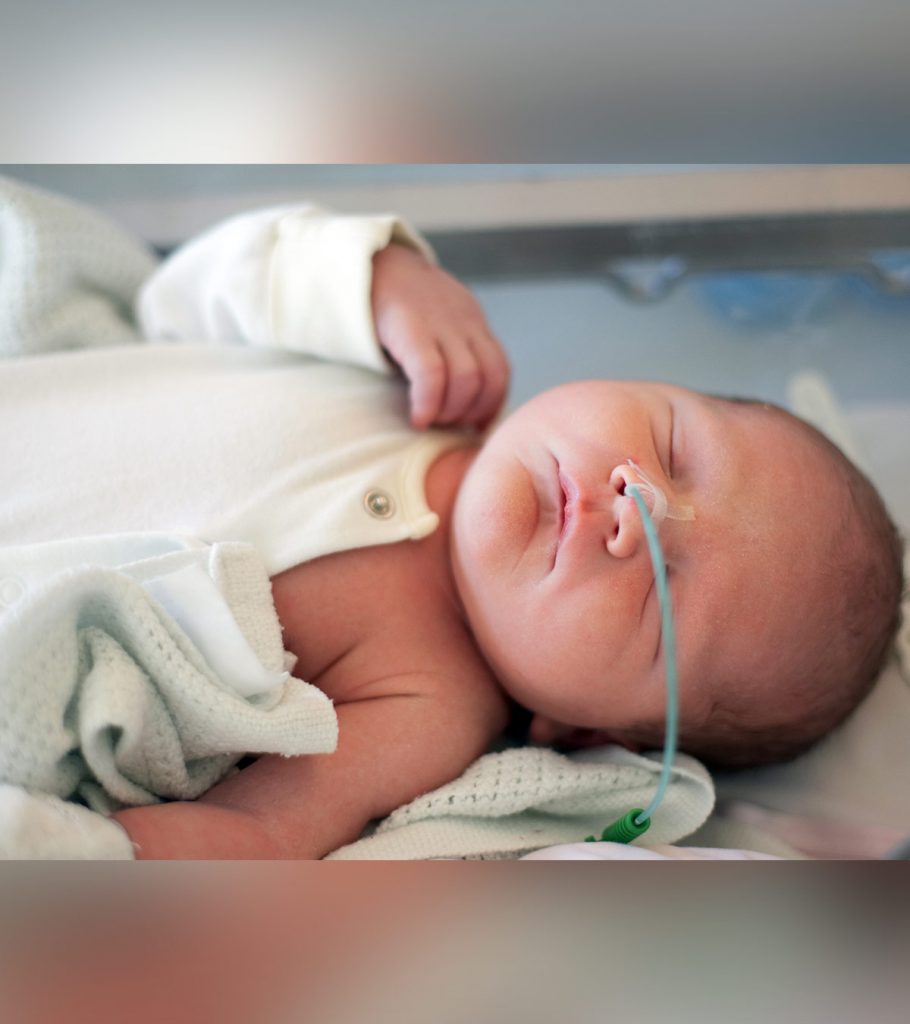A tiny plastic tube placed through the nose or mouth into the stomach is called a feeding tube. These small tubes provide food and medicines directly to the stomach until an infant can swallow.
Babies with swallowing problems and risk of aspiration into the airway are fed through feeding tubes. This form of enteral nutrition is only preferred for babies with normal stomach and intestine functions.
Read this post to learn more about the types of feeding tubes, indications, contraindications, risks, and duration of use in infants.
Why Does A Newborn Need A Feeding Tube?
Newborns who cannot feed themselves from the breast or bottle require a feeding tube. Breastfeeding or bottle-feeding requires strength and coordination. The infant should be able to suck and swallow from the breast or bottle nipple. If a baby is unable to do so, a healthcare provider may recommend a feeding tube.
A feeding tube is recommended if the infant has any of the following issues (1).
- No weight gain
- Irregular patterns of weight gain
- Lack or weak suckling reflex
- Absence or weak swallowing reflex
- Respiratory distress
- Gastrointestinal defects
- Electrolyte imbalance and problems
Being premature or sick may make it difficult for newborns to feed themselves. In such cases, feeding tubes are a safe and efficient way to provide nutrients and medicines to the body.
Types Of Feeding Tubes
There are various types of feeding tubes for enteral feeding. These may include (2) (3):
- Nasogastric tube (NG) is a tube that is passed through the nose into the stomach. It is usually used to feed for two to four weeks.
- Nasojejunal tube (NJT) is a tube that is passed through the nose to part of the small intestine called jejunum (second part). NJT tubes are recommended if the baby has problems with emptying the stomach, pancreatic surgery, or any blockage.
- Jejunostomy tube (JEJ) is a tube that is inserted directly into the jejunum through a hole in the belly. It is usually used for babies after esophageal (food pipe) or gastric (stomach) surgeries. The tubes can be of two types — the percutaneous endoscopic jejunostomy tube (PEJ) and the radiologically inserted jejunostomy tube (RIJ). PEJ tubes are inserted under endoscopic guidance, and RIJ tubes are X-ray guided.
- Gastrostomy tube (G-tube) is a tube that is inserted directly into the stomach through a hole in the belly. It is often used for feeding. It can be a radiologically inserted gastrostomy tube (RIG) or percutaneous endoscopic gastrostomy tube (PEG), depending on the imaging technique used.
- Orogastric tube (OG) is a tube that is passed through the mouth and into the stomach. It is similar in purpose to a nasogastric tube. An orogastric tube could be preferred in cases where the baby has nasal problems or has other nasal intubations.
Pediatricians choose the method of feeding and type of tube based on the baby’s health condition. Some may require imaging tests before tube insertion to examine the digestive system. Babies with more feeding complications are provided with parenteral nutrition, that is, the administration of nutrition into the bloodstream through a vein.
How Is A Feeding Tube Placed?
A feeding tube is placed through the nose or mouth after measuring the estimated length from the tip of the nose to the bottom of the ear lobe and from the ear lobe to a point between the sternum (breastbone) and belly button. Usually, the placement of the feeding tube is confirmed by auscultation or X-ray. Doctors may listen over the stomach after pushing some air into the tube using a syringe.
Feeding tubes may often be placed into smaller intestines for babies with severe feeding problems to provide continuous and slower feeding.
What Are The Risks Of A Feeding Tube?
Feeding tubes are mostly safe. However, they may cause problems if not placed correctly. A misplaced feeding tube may increase the risk of the following problems in infants (4).
- Bradycardia (slow heart rate)
- Breathing issues
- Coughing
- Spitting up or vomiting
- Cyanosis around the mouth
- In rare cases, incorrect insertion may cause a puncture in the stomach
Despite correct placement, some babies may experience the following issues with feeding tubes.
- Irritation of nose and mouth
- Stomach irritation
- Minor bleeding
- Nasal infections
- Stuffy nose
How Long Can A Baby Be On A Feeding Tube?
The feeding tube can be left for months in infants. However, if the tube comes out before a month, the healthcare provider may check for the tube’s condition. If the tube is soft and not damaged, it can be rinsed and placed back into the stomach.
New tubes are placed if the end of the tube becomes hard or damaged. The tube feeding is continuous until the baby can feed themselves or until any interventions are done to resolve the feeding difficulties.
If a baby needs feeding tubes for a longer duration due to medical conditions, pediatricians may opt to place a gastronomy tube or G-tube instead of a nasogastric or orogastric tube. This is established through small surgical procedures and kept until the baby requires it.
Babies with severe gastrointestinal problems, such as severe diarrhea and bowel blockage, are not fed through feeding tubes. Some babies may develop bloating, diarrhea, and other abdominal discomforts due to the feeding tubes. Pediatricians may choose the type and rate of feeding according to your baby’s requirement to alleviate any problems. Once the baby is able to feed, the feeding tube is removed, and the baby can eat the usual way based on the doctor’s guidance.
